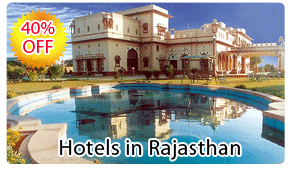
- perfectholidaytravel@hotmail.com
- +91 9811138106 / 9811 5939 89
Mount Abu City

Mount Abu Cradled in the cluster of thirteen mountain peaks of the Aravali ranges,the formidable medieval citadel- Kumbhalgarh standsa wary sentinel to the past glory. Rising from a prominent ridge, 1914 metres high from the sea level, the fort was built in 15th century AD by Maharana Kumbha (1419-63 AD) and is the principal fortification after Chittaurgarh, lying 90 km north-west of Udaipur.
The massive fort,encompassed by a 36 km long wall,has seven majestic gates and seven ramparts, one within the other. Rounded bastions and soaring watch towers strengthen the crenallated walls of the fort making it an impregnable structure Fascinating chambers are built on the western side of the last gate- the 'Nimboo Pol'. According to history, the infant Udai Singh was smuggled from Bundi and hidden in these chambers by his faithful maid Panna Dai to save him from the murderous intentions of his Uncles who desired the throne. Udai Singh ascended the throne of Mewar with Kumbhalgarh as his residence and later established Udaipur-the beautiful lake city. Within the fort are many magnificent palaces and an array of ruined temples.
The most picturesque of the palace is the 'Badal Mahal' or the palace of the cloud. The palace has got its name for being the highest of all the structures. It offers a superb bird's eye view of the countryside surrounding the fort as well as of other ruins within the fort.The ancient ruins of the temples within the fort date back to the Mauryan period built during the reign of the grandson of the Mauryan Emperor Ashoka who belonged to the Jai community.
Most of the ruins in Kumbhalgarh are of the Jain temples of various periods.
As one moves to the east ,Kali Temple and the Mamadev Kund with royal chhatris can be seen. Another notweorthy temple, a little further, exshrines a fine black marble lingam. The mandap or the hall of the temple has beautiful pillars, finely fluted and having a tapering shape.
Places to visit
Dilwara Jain Temple:
These beautifully carved temples built between 11th and 13th century A.D. are sheer elegance in marble, dedicated to the jain Tirthankaras. The Vimal Vasahi temple is the oldest of these dedicated to the first Tirthankara. Built in 1031 A.D. (by Vimal Shah-a merchant and representative of then Gujarat ruler), it is a superb example of temple architecture.
The central shrine has an image of Rishabhdev and large courtyard with 52 small shrines,each housing a beautiful statue of thirthankaras with 48 elegantly carved pillars form the entrance to the courtyard.The Lun Vasahi Temple, dedicated to the 22nd Tirthankaras-Neminath, was built in 1231 A.D. by two brothers-Vastupal and Tejpal,Ministers of Raja Vir Dhawal, a ruler of Gujarat-belonging to the Porwal Jain community.With door casings, pillars, architraves and sculptures on porticos,the temple is a fine specimen of craftsmanship
Museum and Art Gallery:
Located at the Raj Bhawan, it was a collection of archaeological excavations dating back to 8th-12th century A.D. It also has Jain bronze carvings,brassworks etc. for viewing.
Gaumukh Temple:
A natural spring flowing through a sculpted cow's head gives the shrine its name.The famous 'yagna' of sage Vashishtha was performed here. A beautifully sculpted hill temple of Arbuada-the mighty serpent stands against the beautiful backdrop. Nearby is the magnificent marble image of Nandi, the celestial bull rescued by Arbuada.
Adhar Devi Temple :
The temple is chiselled out of a huge rock reached by a flight of 360 stairs. A favourite tourist spot.
Sunset Point:
Spectacular sight of the setting sun when the hills are covered in the golden glow can be viewed from here.
Honeymoon Point:
Also known as Andra Point, it offers an enchanting view of the verdant plains and valleys. The place looks most beautiful during the dusk hours.
Shri Raghunathji Temple:
Situated near the 'Nakki' lake is the temple dedicated to Shri Raghunathji with a beautiful image of the deity that was placed here in 14th century A.D. by Shri Ramanand the famous Hindu preacher.
Gardens and Parks:
Beautifully laid parks and gardens are interspersed throughout the hilly paradise. Ashok Vatika,Gandhi park, Municipal Park,Shaitan Singh Park and Terrace Garden are some of the noteworthy gardens.
Excursions
Trevor's Tank (5 km):
Named after the British engineer who constructed it, Trevor's Tank is a delight for birdwatchers with densely wooded hills that are a haven to pigeons, peacocks and partridges.
Achalgarh (8 km):
An impressive fort with some beautiful jain temples enclosed within. Among the
noteworthy temples are Achaleswar Mahadev Temple (1412 A.D.) and Kantinath Jain Temple (1513A.D.) . The latter has gold plated image. Mandakini Kund and a sculpture of Parmar Dharavarsh are situated close to the Achaleswar Mahadev Temple. The Fort was built in the 14th century A.D. by Rana Kumbha and is approachable by a motorable road.
Guru Shikhar (15 km):
The highest peak on the mount (1722 mts. Above the sea level) allows a bird's eye view of the sylvan surroundings of Mt. Abu.
A small Shaivite shrine and a temple of Dattatreya standing on the shikhar are worth a visit.
Access
Air : Nearest airport is Udaipur, 185 kms.
Rail : Abu Road is the closest railhead linked with Ahmedabad, Delhi, Jaipur and Jodhpur
Road : Good network of bus services connect Mount Abu to major cities of Rajasthan and India.










